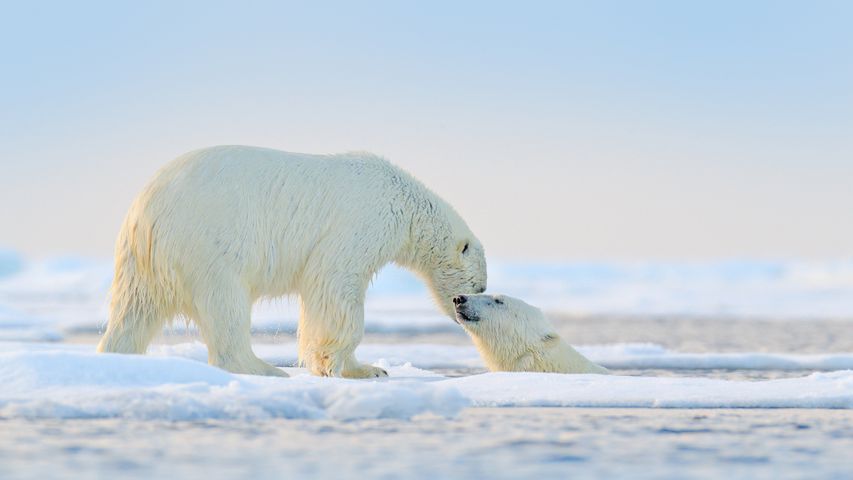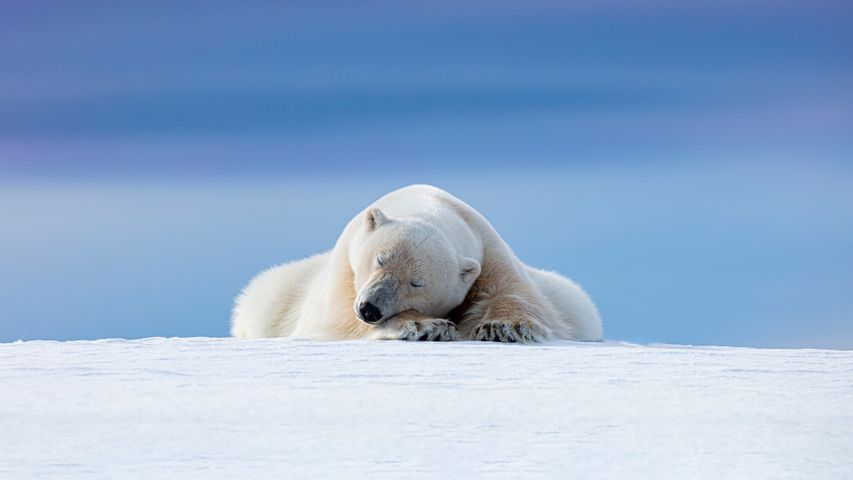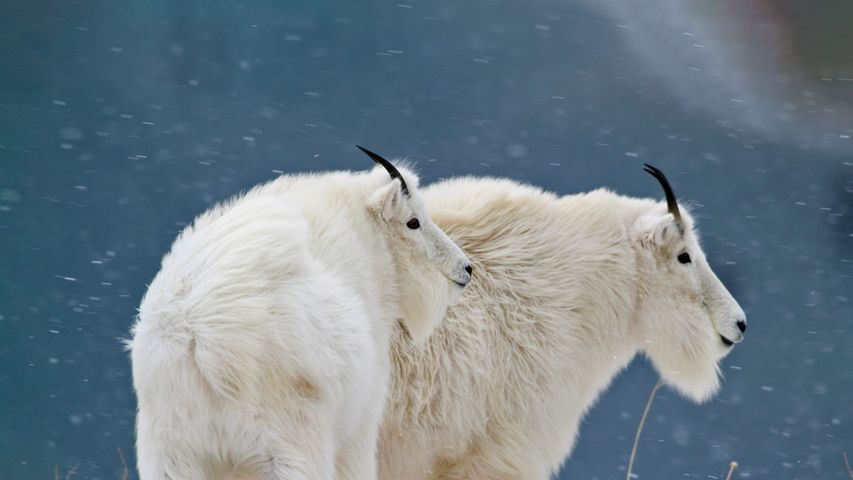Polar bears, Wapusk National Park, Manitoba, Canada
© Andre Gilden/Minden Picture
Polar bears
This polar bear mother and her playful cubs have been photographed in Wapusk National Park, Manitoba, Canada. Wapusk – which means ‘white bear’ in the Cree language – is one of the largest polar bear denning areas in the world and is critical to the survival of a population of about 1,000 bears who roam the western side of Hudson Bay. The park’s location in the transition zone between boreal forest and Arctic tundra makes it important when monitoring the effects of climate change. Perhaps no other creature is as emblematic of climate change as polar bears, the apex predator of the Arctic Circle. As the planet warms, their fragile habitat shrinks.
In autumn, after the ice floes have diminished, making hunting more difficult, a pregnant female polar bear will dig a maternity den, usually in a snowdrift. She lies dormant there through the winter before giving birth sometime between November and February. The cubs are born blind and weigh about half a kilogram with only a light layer of fur. In the cold Arctic winter, the newborns would suffer outside the protection of the den, so they rest there with their mother, growing quickly on her milk until the young family breaks open the entrance to the den sometime in early spring.
Related Images
Bing Today Images






 Polar bears at play in the Arctic
Polar bears at play in the Arctic
 Polar bear with cub, Churchill, Manitoba, Canada
Polar bear with cub, Churchill, Manitoba, Canada
 Polar bear mother and cubs, Churchill, Manitoba, Canada
Polar bear mother and cubs, Churchill, Manitoba, Canada
 Stoat (Mustela erminea), Upper Bavaria, Germany
Stoat (Mustela erminea), Upper Bavaria, Germany
 Polar bear, Svalbard, Norway
Polar bear, Svalbard, Norway
 Mountain goats, Glacier National Park, Montana, USA
Mountain goats, Glacier National Park, Montana, USA
